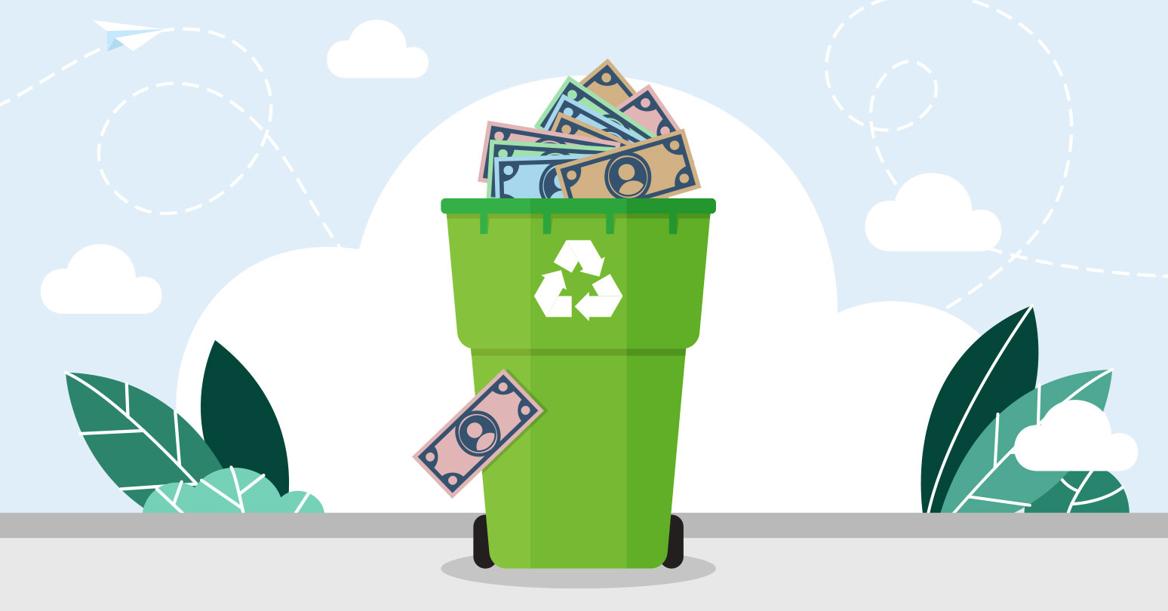If there’s one issue uniting Canadians today, it’s skyrocketing food costs. With food insecurity on the rise, families are scrutinizing their budgets more than ever. Given these costs, you would expect overall food waste to be trending downward. Yet, a new report from the Ivey Centre for Building Sustainable Value and Western University’s Human Environments Analysis Laboratory (HEAL) reveals an alarming reality: Canadians are wasting a staggering amount of food.
This paradox might be baffling, but there's a silver lining. In their illuminating report, Good to the Last Bite, Ivey adjunct professor Paul van der Werf and his team employed a data-driven model to analyze food-wasting behaviour. The report offers actionable insights to help Canadian consumers leave more money in their wallets, while at the same time help the environment. It's all about finding the right motivation.
The real cost of waste
Amid the relentless hustle of modern life and its various demands, food management often falls by the wayside. As a result, a substantial portion of food purchased by households is wasted, lost to a variety of overlooked factors. And the numbers don’t lie.
In Canada, food waste constitutes at least 35 per cent of a typical household's trash, much of it preventable, aside from scraps like bones, shells, and peels. A concerning environmental issue, this waste results in considerable greenhouse gas emissions, notably methane, a potent contributor to climate change.
A previous study in London, Ontario revealed the average household throws away $600-worth of avoidable food annually. A Second Harvest report estimates even higher — more than $1,800. The upshot? Food waste costs Canada between $10 and $25 billion annually.
At the same time, more Canadians are food insecure. Despite Canada being one of the world’s largest food producers, 6.8 million people, including 1.8 million children, lack safe and nutritious food.
van der Werf's study of 1,263 London, Ontario households shows they wasted six portions of edible food weekly, even more with children present. The most frequently wasted items were fruits and vegetables, followed by bread and baked goods, and dried goods. Meat and fish are often thrown away based on "best before" dates, the study showed.
“There is a fundamental misunderstanding of what ‘best before’ labels mean; it has more to do with when retailers want to sell their food by and when you need to pay a bit more attention to food spoilage. As I like to say, ‘best before’ does not mean ‘worst after’,” said van der Werf.
Given the alarming volume of food waste and the complex web of contributing factors, how can we implement meaningful solutions to effectively eat away at this pressing issue?
Five steps to saving green and going green
Understanding the environmental impact of their waste might seem like a potent motivator for the average Canadian to think twice about the food they are buying. Yet, van der Werf's study reveals that this knowledge alone is not enough to encourage better food management practices.
Like many substantial lifestyle shifts, the secret to driving behavior change lies in grasping the underlying motivations. van der Werf and his team identified cost savings as the primary motivator for London households. Leveraging this insight, they devised an intervention that highlighted the economic costs of food waste and supplemented this with five simple tasks:
- Planning your meals ahead of time;
- Making a grocery list – and sticking to it;
- Storing food properly;
- Preparing the right amount of food; and,
- Loving those leftovers.
Although he describes this method as straightforward, its success hinges on individuals aligning their motivations toward improved household food management and waste reduction. This is particularly vital in larger households, which generally produce more food waste and where not all family members might find common ground on the topic.
For lasting success, van der Werf recommends focusing on what he calls "waste champions" – the household members responsible for managing food and waste. By emphasizing their key motivation of financial benefits first and equipping these champions with clear messages, actionable steps, and practical tools, households can dramatically trim down their food waste. This approach not only helps Canadians save money but has the added bonus of a significant environmental payoff – regardless of their personal commitment to sustainability.
Joining forks
While their report focuses on consumer waste, van der Werf says food waste involves numerous stakeholders. Across the supply chain, from farm to table, up to 50 per cent of food destined for consumption is wasted. In Canada alone, a staggering 8 million tonnes of food is wasted annually, equivalent to the weight of 40,000 blue whales.
This calls for a systemic solution involving consumers, policy-makers, and retailers. In particular, researchers advocate for customized municipal policies to reduce food waste, enhance environmental outcomes, and potentially lower taxes.
“At the end of the day, if municipalities do not need to collect waste, then taxpayers do not need to pay for its management. Food waste in landfills has a high greenhouse gas (i.e., climate) impact. As many Canadian municipalities have declared climate emergencies, the act of simply reducing food waste collection is a relatively easy way to address this emergency in a meaningful way,” said van der Werf.
van der Werf also sees a crucial role for retailers to educate consumers about food quality, best before dates, and meal planning. They can also actively reduce their own waste through donations and discounts on near-expired items – a strategy that can also help mitigate food insecurity.
“On the ‘back of the house’ side, managing food waste is a difficult and ongoing task,” said van der Werf. “Measures to better match the food retailers bring in for sale with that which will be purchased is a critical part of managing their bottom line – and ultimately the consumer’s bottom line.”
Easing the many effects of food waste requires a collective effort, but individual action is also critical. By embracing the easy five-step plan, waste champions can minimize their own waste and gain a greater appreciation of the value of every last bite.
Hungry for more details? Explore the full report, Good to the Last Bite or gain fresh insights from The Ivey Academy’s podcast, Circular Food Economy: Canada's $50 Billion Opportunity. In the hour-long episode, produced in collaboration with the Ivey Centre for Building Sustainable Value, Bryan Benjamin, Executive Director at The Ivey Academy, moderates a dynamic discussion with panelists Jury Gualandris, Associate Professor, Operations Management & Sustainability and Faculty Director, Ivey Centre for Building Sustainable Value; Denise Philippe, Senior Policy Advisor Metro Vancouver and National Zero Waste Council; and Julie Poitras Saulnier, CEO & Cofounder at LOOP Mission.






